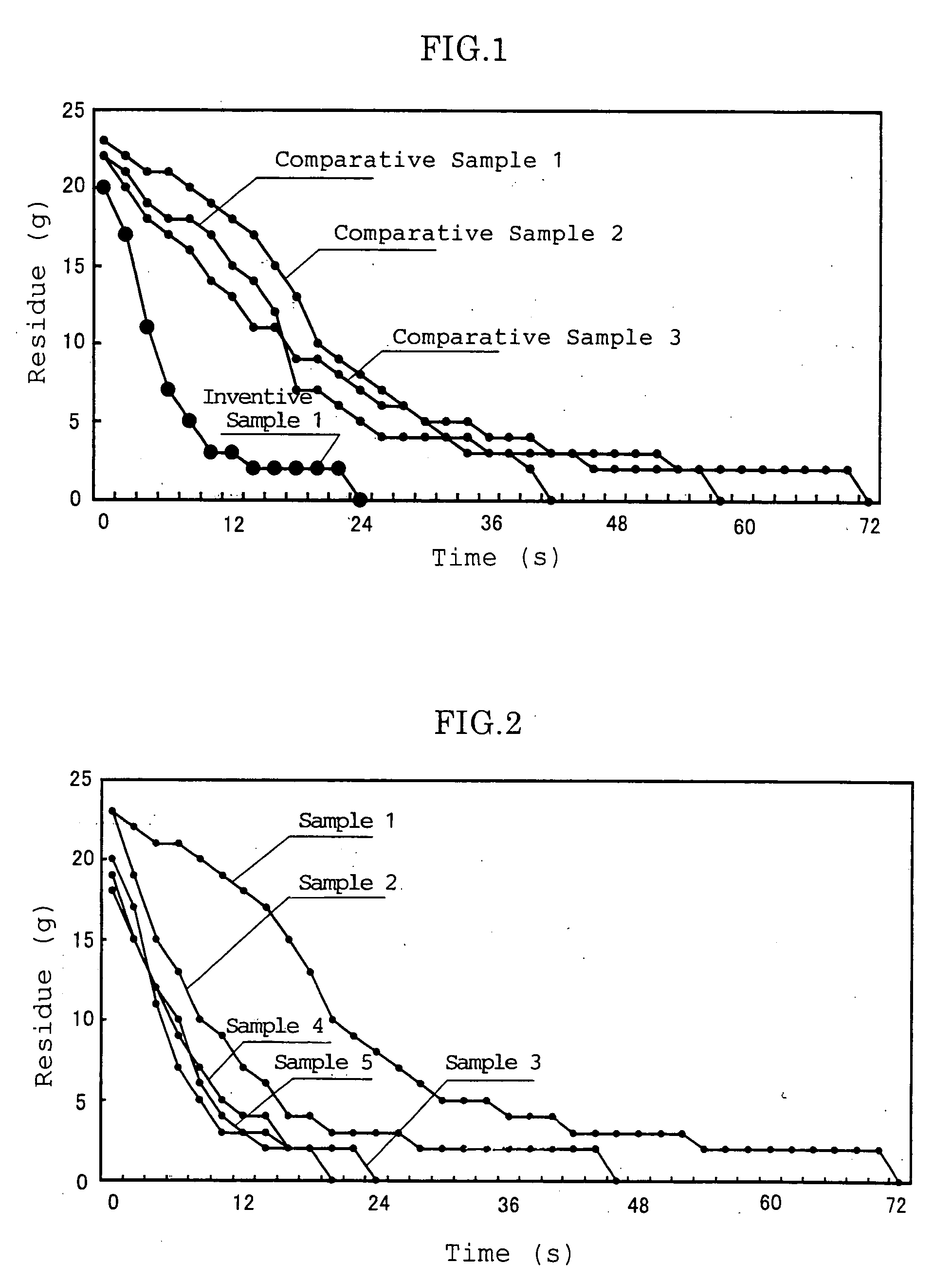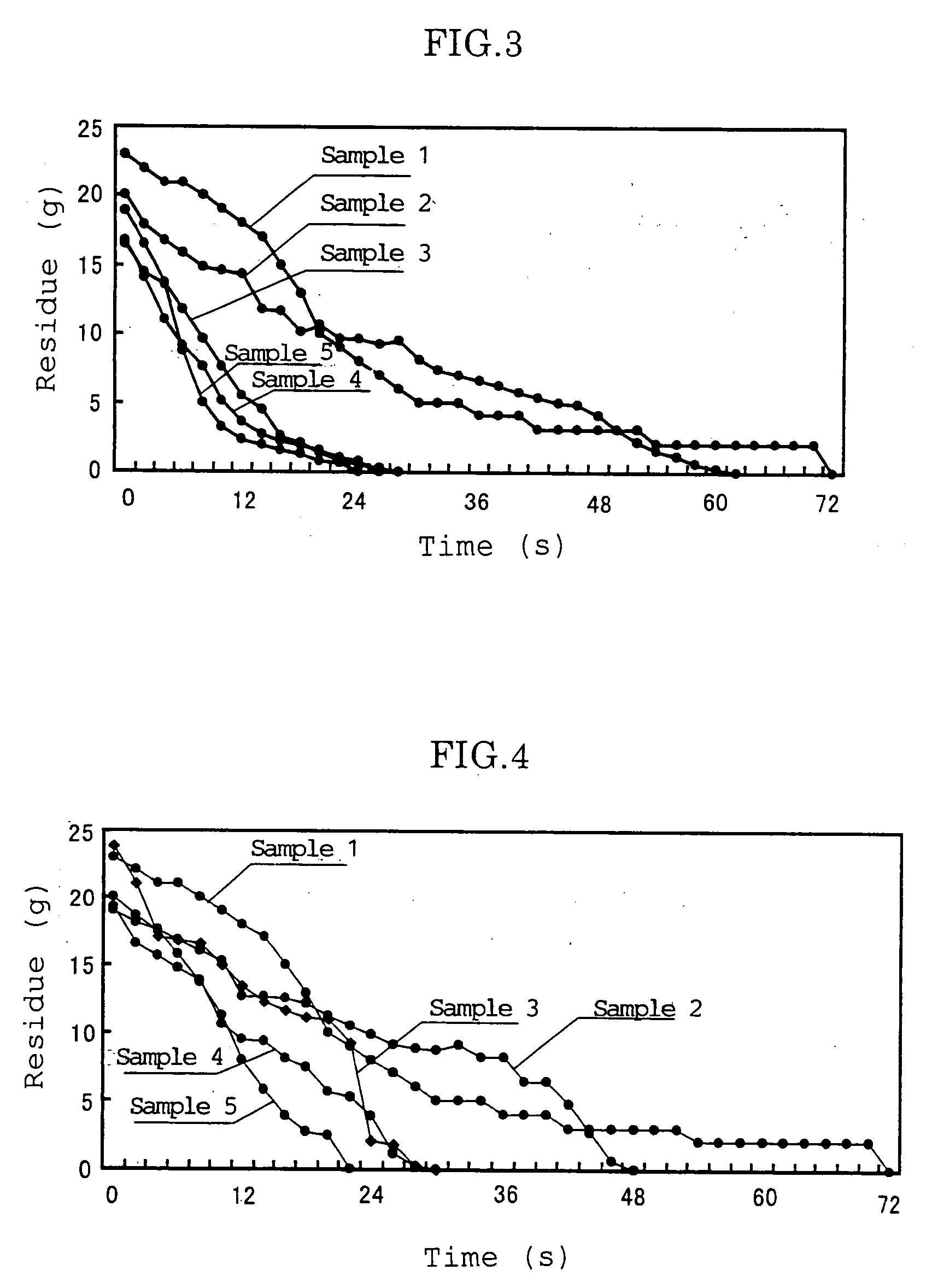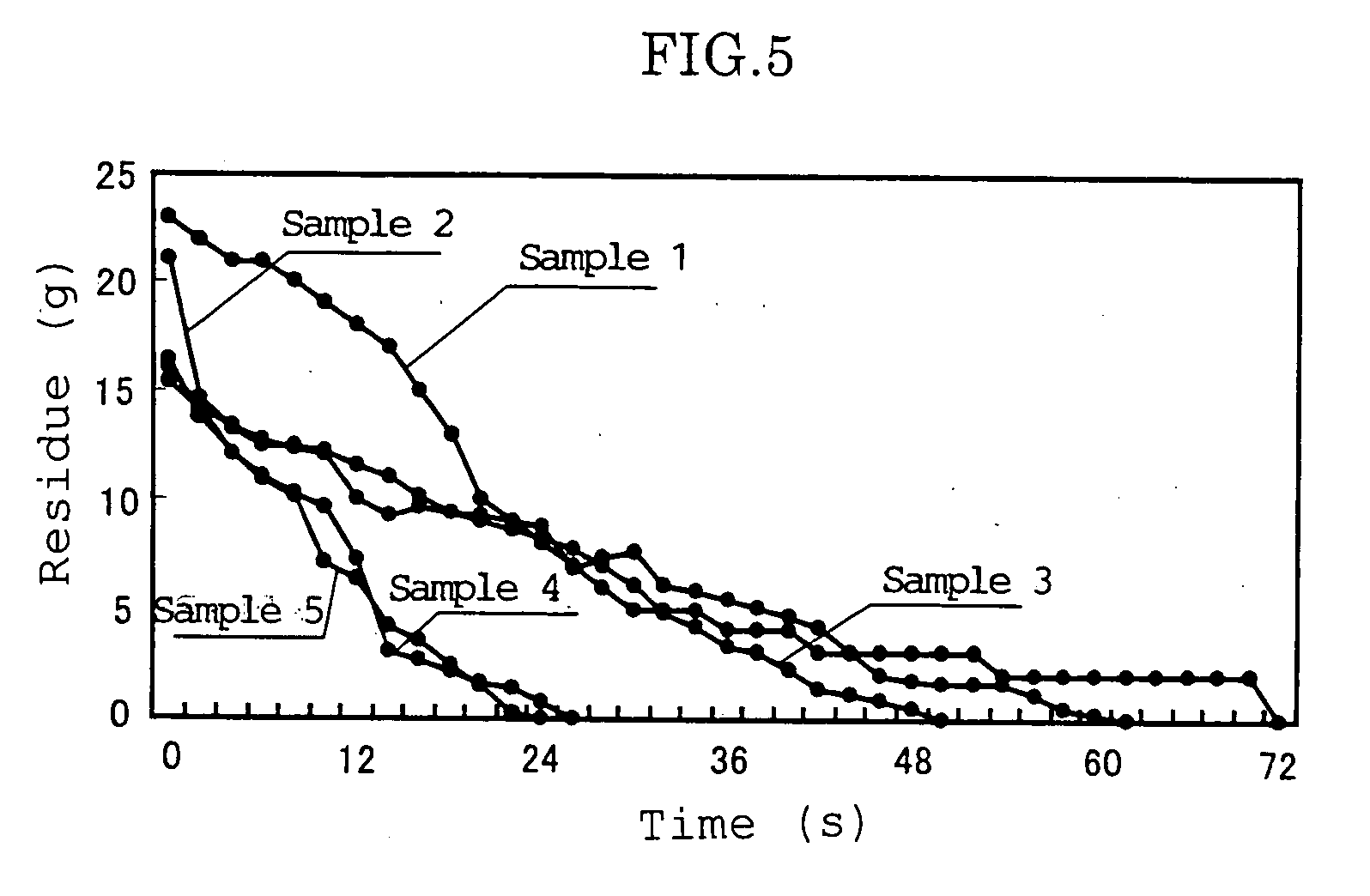Water-Soluble Dry Food
a technology of dry food and solvent, applied in the field of water-soluble dry food, can solve the problems of deteriorating solubility of dry food in solvent such as water, hard to drink, etc., and achieve the effect of enhancing the solubility of dry food
- Summary
- Abstract
- Description
- Claims
- Application Information
AI Technical Summary
Benefits of technology
Problems solved by technology
Method used
Image
Examples
example 2
[0059]In this example, the drinkability of drink containing ashitaba paste as the main ingredient was examined by a sensory test. Specifically, in the sensory test, four sample drinks were prepared by completely dissolving each of the samples (dry food) shown in Table 1 in 100 ml of water (4° C.), and test users evaluated the drinkability of each sample drink in four grades, “most drinkable and palatable: ⊚”, “palatable: ∘”, “a little hard to drink: Δ” and “hard to drink: x”. The results are given in Table 2 below.
TABLE 2EvaluationInventiveAshitaba paste⊚most drinkable and palatablesample drinkIndigestibledextrinOlive oilComparativeAshitaba pasteΔsmells grassy, andsample drink 1a little hard to drinkComparativeAshitaba paste◯grassy smell is masked,sample drink 2Indigestibleand palatabledextrinComparativeAshitaba paste◯grassy smell is masked,sample drink 3Olive oiland palatable
[0060]As will be understood from Table 2, the inventive sample drink containing indigestible dextrin and oli...
example 3
[0061]In this example, the effect of the content of olive oil on the solubility of freeze-dried food was examined using a plurality of samples of different olive oil content. The olive oil content in each sample is shown in Table 3 below. The samples differ from each other only in olive oil content. The preparation of the samples and the determination of the solubility were performed similarly to Example 1. The results are shown in FIG. 2 and Table 3.
TABLE 3Ingredients and ContentDissolutionAshitabaIndigestibleTimepastedextrinOlive oil(Sec.)Sample 130 g6 g 0 g72Sample 20.05 g46Sample 30.10 g24Sample 40.50 g20Sample 51.00 g20
[0062]As shown in FIG. 2 and Table 3, the samples to which olive oil was added showed high solubility of a practical level in a low-temperature (4° C.) solvent even when the amount of the added olive oil was small like samples 2 and 3. That is, the solubility of the samples (dry food) was enhanced by the addition of a small amount of olive oil. Practically, it i...
example 4
[0063]In this example, the drinkability of sample drinks containing olive oil was examined by a sensory test. Specifically, in the sensory test, sample drinks were prepared by completely dissolving each of the five samples (dry food) shown in Table 3 in 100 ml of water (4° C.), and test users evaluated the drinkability of each sample drink in four grades, similarly to Example 2. The results are given in Table 4 below.
TABLE 4EvaluationSampleAshitaba paste◯grassy smell is masked,drink 1Indigestibleand palatabledextrinSampleOlive Oil◯grassy smell is masked,drink 20.05 gand palatableSampleOlive Oil⊚most drinkable and palatabledrink 30.1 gSampleOlive Oil◯a little oily but palatabledrink 40.5 gSampleOlive OilΔoily and a little hard to drinkdrink 51.0 g
[0064]As will be understood from Table 4, in the examination of the effect of the addition of olive oil to the samples containing ashitaba paste and indigestible dextrin, the sample drink 3 containing 0.1 g of olive oil was most highly rated...
PUM
 Login to View More
Login to View More Abstract
Description
Claims
Application Information
 Login to View More
Login to View More - R&D
- Intellectual Property
- Life Sciences
- Materials
- Tech Scout
- Unparalleled Data Quality
- Higher Quality Content
- 60% Fewer Hallucinations
Browse by: Latest US Patents, China's latest patents, Technical Efficacy Thesaurus, Application Domain, Technology Topic, Popular Technical Reports.
© 2025 PatSnap. All rights reserved.Legal|Privacy policy|Modern Slavery Act Transparency Statement|Sitemap|About US| Contact US: help@patsnap.com



